
| Less-stick Casemoth PSYCHIDAE, TINEOIDEA | (donherbisonevans@yahoo.com) and Stella Crossley |
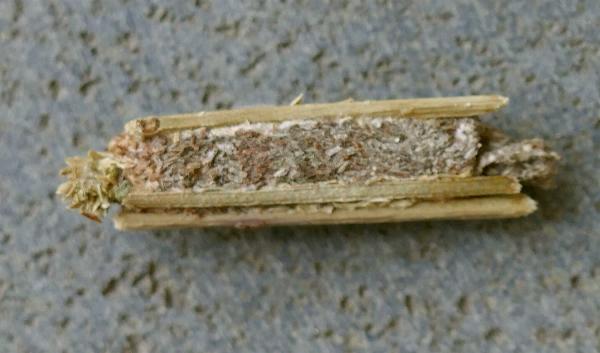
case with several sticks attached
(Photo: courtesy of Marlene Walter, Clifton Hill, Victoria)

| Less-stick Casemoth PSYCHIDAE, TINEOIDEA | (donherbisonevans@yahoo.com) and Stella Crossley |

case with several sticks attached
(Photo: courtesy of Marlene Walter, Clifton Hill, Victoria)
These Caterpillars live in a silken shelter which it has covered in small bits of vegetation. They sometimes attach one, two, or three twigs, each with a length about equal to the length of the case.
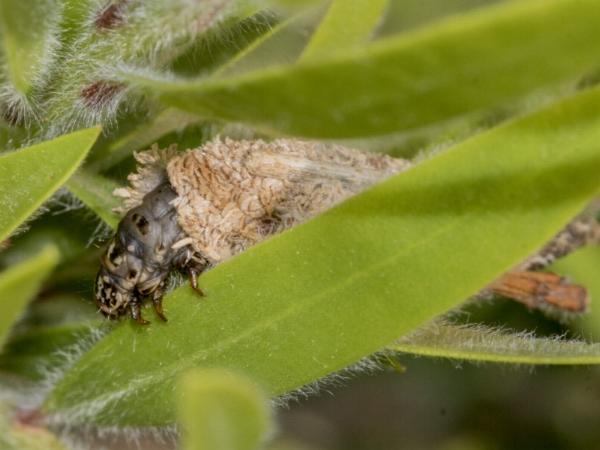
To feed: the caterpillar stretches its head and thorax out of its shelter. These parts of the body have a hard skin, and are off-white with a complex dark brown pattern. It may move to differently coloured vegetation, resulting in coloured bands along the case.
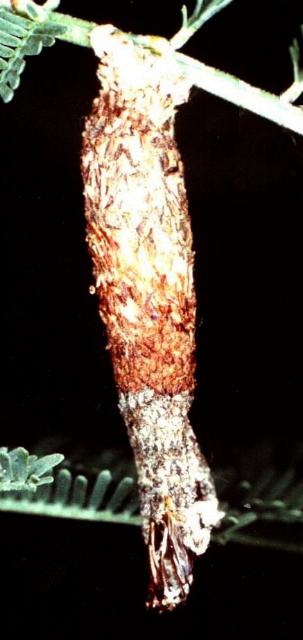

The caterpillar has been found feeding on
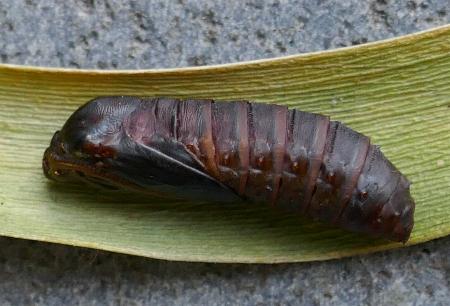
The caterpillar pupates in its case. The pupa is brown with corrugations along the abdomen. The pupa is partly extruded from the case for the emergence of the male moth.

The forewings of the adult moths have a scale-like pattern of pale and dark grey. The hindwings are grey, tending to off-white at the bases. The wingspan is about 2.5 cms.
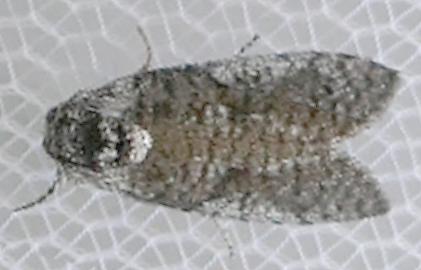
The species has been found in
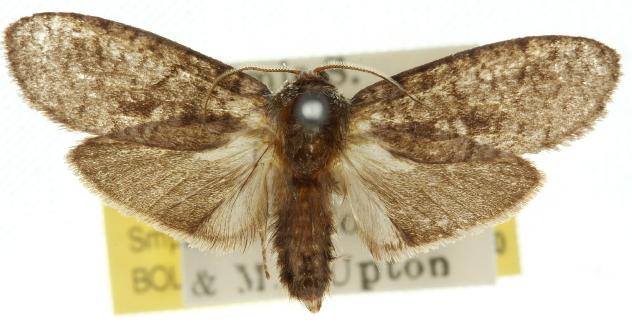
One female reared in captivity laid a pile of several hundred eggs which were off-white and globular, each with a diameter of about 0.5 mm.

Further reading :
A. Jefferis Turner,
A revision of the Australian Nolidae,
Proceedings of the Royal Society of Queensland,
Volume 56 (1945), p. 65, No. 64.
 caterpillar |  butterflies |  Lepidoptera |  moths |  caterpillar |
(written 7 January 2017, updated 11 January 2025)